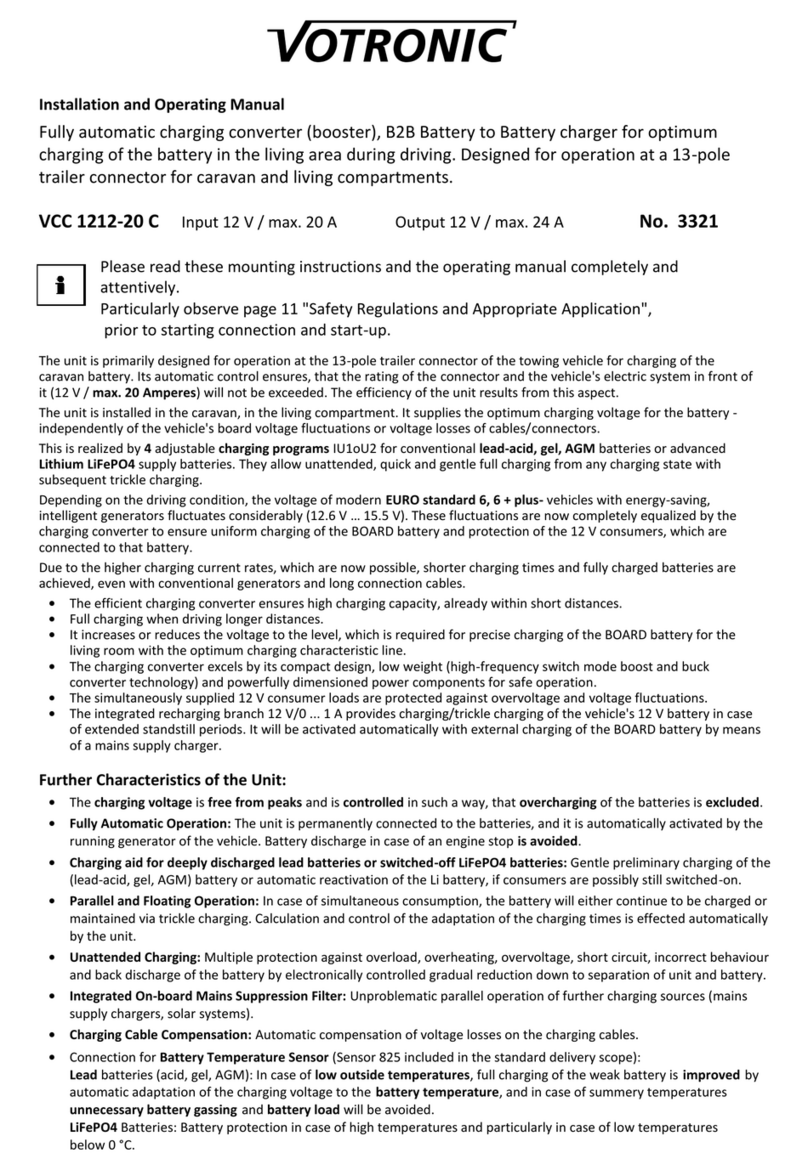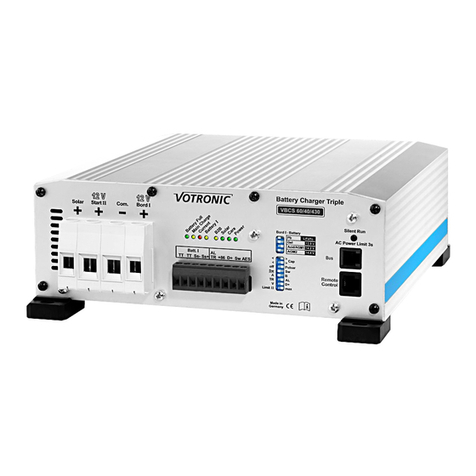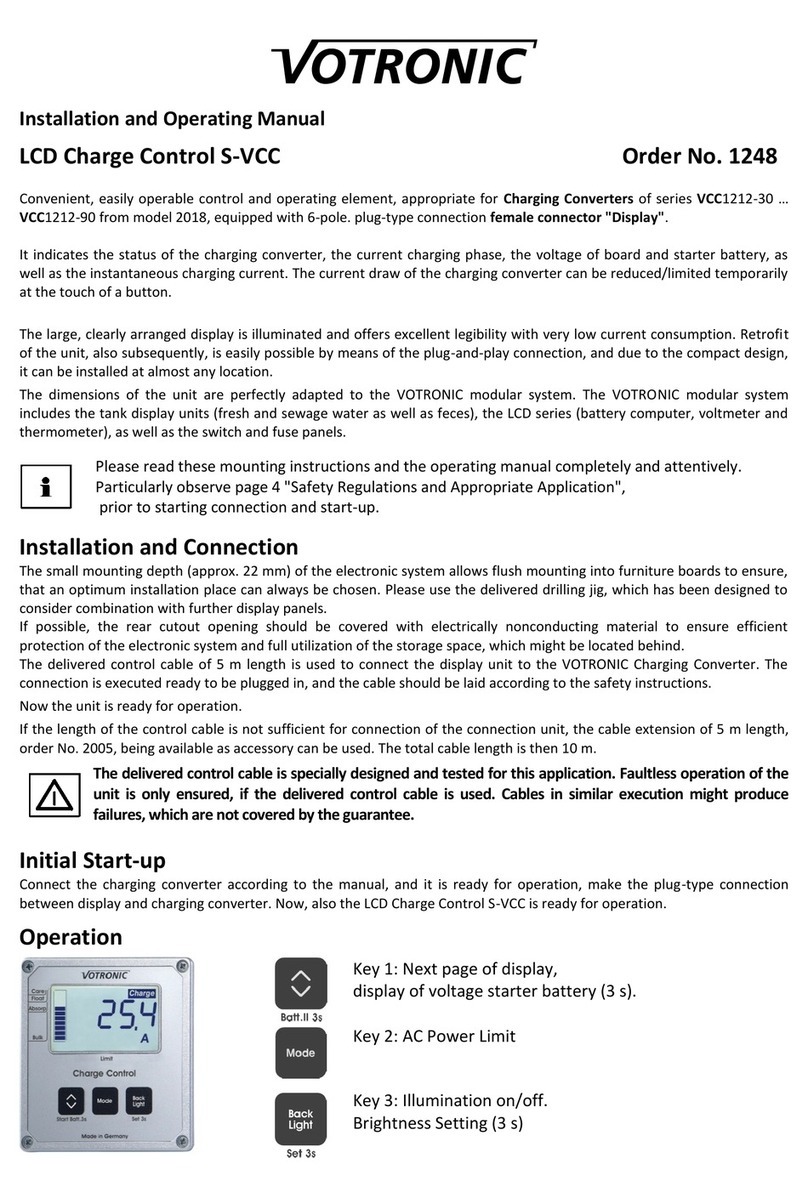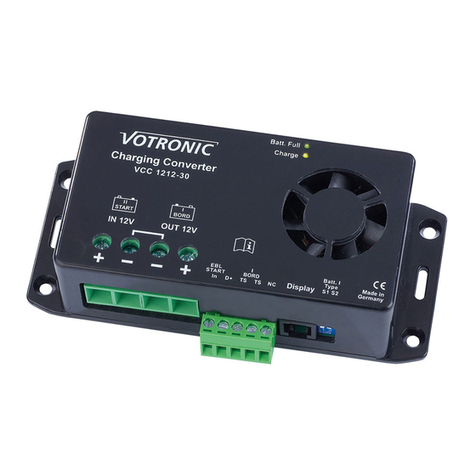
Installation and Operating Manual
Charging Converter, B2B Battery to Battery, battery charging while driving:
VCC 1212-25 Li Input Voltage 12 V Charging Capacity 12 V / 25 A No. 3300
VCC 1212-45 Li Input Voltage 12 V Charging Capacity 12 V / 45 A No. 3307
VCC 2412-25 Li Input Voltage 24 V Charging Capacity 12 V / 25 A No. 3302
VCC 2412-45 Li Input Voltage 24 V Charging Capacity 12 V / 45 A No. 3309
Note: The unit does not operate, unless the temperature sensor had been
connected (safety disconnection)!
Please read this operating and installation manual thoroughly prior to connection and start-up.
Fully automatic Battery Charging Converter for LiFePO4 batteries in special purpose vehicles, in high-quality
campers, in the marine field.
The charging converters (Booster, B2B Battery to Battery) had been developed according to the latest regulations for
supply battery charging (board battery) with LiFePO4 technology during driving.
In contrast to conventional cutoff relays, the charging voltage will be raised or lowered in case of losses on the supply
lines, battery voltage fluctuations etc., thus adapting it automatically to the default charging values. Charging converters
with 24 V input voltage allow charging of the 12 V supply battery without installation of a second generator.
Thus, the charging converter ensures the known high-quality battery charging of the VOTRONIC chargers also during
driving. Due to the intelligent microprocessor charging control with charging characteristic lines "IIU1oU2oU3" and
dynamic calculation of the charging time, automatic, quick and gentle full charging is ensured, as well as subsequent
100 % trickle charge of the connected batteries from any charging state. At the same time, simultaneous supply of 12 V
consumers, which are connected in parallel, is ensured. Overcharging of the batteries is avoided, even in case of
extremely long driving times.
The charging converters excel by their compact design, low weight (high-frequency switch mode technology), powerfully
dimensioned power components and consequently full charging capacity, even with long charging cables or strong
voltage fluctuations at the starter battery (EURO Standard 6, 6 + plus vehicles), information see page 10, table 2, switch
position "D".
Battery Port and Charging Programs:
Charging Port "OUT": Board battery, supply battery, depending on battery type and battery manufacturer 4 charging
programs selectable,adapted to Lithium LiFePO4 batteries, see table 1, page 8.
Further Characteristics of the Unit:
•The charging voltage is free from peaks and is controlled in such a way, that overcharging of the batteries is
excluded.
•Fully automatic operation by means of control input (ignition, running motor, D+), as well as voltage control.
•Automatic, adjustable power control giving priority to charging of the starter battery by the generator in case of
overloaded vehicle mains to ensure that the vehicle can be started at any time.
•No discharge (current 0,000 A) of the batteries during stand-by or with switched-off charging converter.
•Parallel and Floating Operation: In case of simultaneous consumption, the battery will either continue to be charged
or maintained via trickle charging. Calculation and control of the adaptation of the charging time is effected
automatically by the charging converter.
•Unattended Charging: Multiple protection against overload, overheating, overvoltage, short circuit, reverse battery
at the output, incorrect behaviour and back discharge of the battery by electronically controlled gradual reduction
down to complete separation of charging converter and battery by integrated safety relays.
•Galvanic isolation between input and output: Complete separation of the battery circuits, even in case of failure,
important for 12 V/24 V mixed systems, avoids undesirable back discharge and suppresses interferences in the board
mains.
•Charging Cable Compensation: Automatic compensation of voltage losses on the charging cables.
•Integrated On-board Mains Suppression Filter: Unproblematic parallel operation of solar systems, wind and petrol-
driven generators, mains supply chargers etc. at a single battery.
•Temperature control and adaptation of the charging by battery temperature sensor, which allows also charging
beyond the recommended LiFePO4 battery temperatures below 5 °C and above 35 °C.
Battery Lifetime and Efficiency:
•Keep the batteries cool, LiFePO4 preferably above 0 °C. Choose an appropriate location for
installation.
•Store only fully charged batteries and recharge them periodically.































